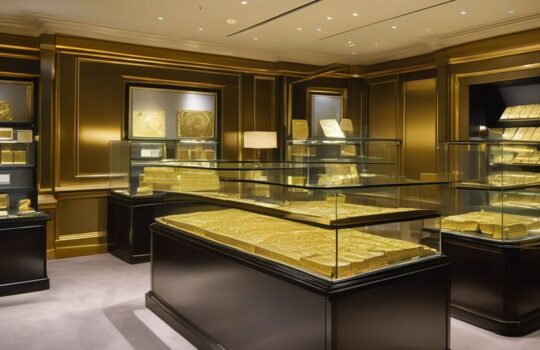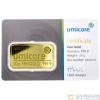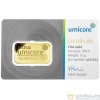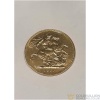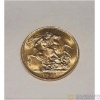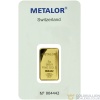The Allure of Purity: Assessing the Value of a 1 Ounce Gold Bar
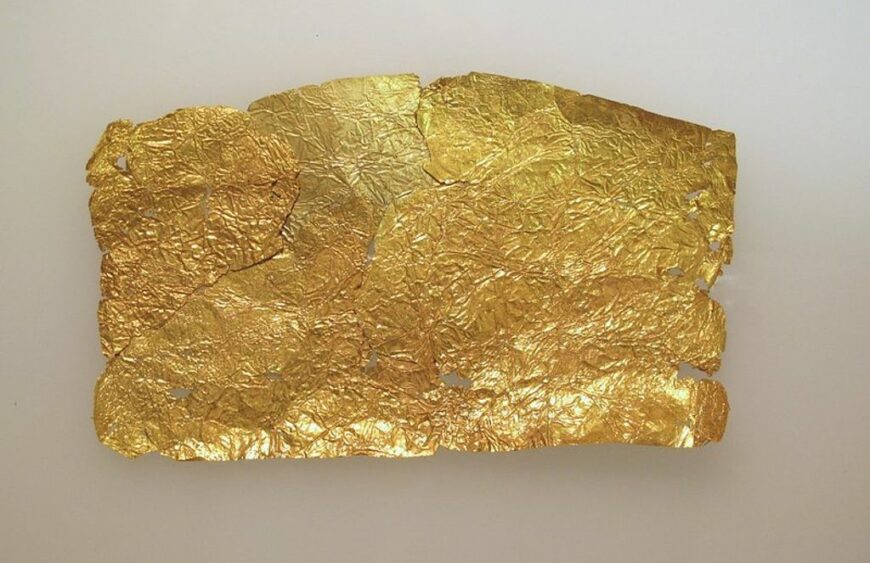
Gold has long been revered for its allure and value, with 1 ounce gold bars holding a special place in the world of precious metals. Understanding gold purity, investing in gold, and assessing gold value are crucial aspects for anyone considering the acquisition of a 1 ounce gold bar. In this article, we will explore these topics in depth to provide a comprehensive overview of the value and significance of 1 ounce gold bars.
Key Takeaways
- Gold purity, measured in karats or fineness, directly impacts its value and investment potential.
- Investors should prioritise verifying the purity and ensuring the weight accuracy when considering 1 ounce gold bars.
- Gold bars offer a tangible and secure investment option with lower premiums over the spot price of gold.
- The historical and brand value of 1 ounce gold bars can contribute to their overall worth.
- Understanding the nuances of gold ETFs is essential for investors seeking exposure to gold without physical ownership.
Understanding Gold Purity

Karat System and Fineness
The karat system is a traditional method of denoting the purity of gold, with pure gold being 24 karats. The value and appearance of gold are intrinsically linked to its purity, which is expressed in both karats and fineness. For example, 18-karat gold, which is popular for fine jewellery, contains 18 parts pure gold and 6 parts other metals, equating to a purity of 75% or a fineness of 750.
In different regions, the preference for gold purity varies. Western countries often favour 10k, 14k, and 18k gold, while in Asia, higher karatages such as 20k, 21k, 22k, and the coveted 24k are more prevalent. The table below illustrates common karatages and their corresponding purity and fineness:
| Karatage | Purity (%) | Fineness |
|---|---|---|
| 24K | 100 | 1000 |
| 22K | 91.7 | 917 |
| 18K | 75 | 750 |
| 14K | 58.3 | 583 |
| 10K | 41.7 | 417 |
Purity not only affects the lustre and hue of gold but also its suitability for various applications. While 24K gold boasts the highest purity and a vibrant yellow colour, it is also the softest, making it less ideal for items that endure daily wear and tear.
Gold Colours and Alloys
The world of gold is not limited to the classic gleam of yellow; it spans a spectrum of captivating hues, each with its own allure. Different alloys yield various colours, providing a palette for designers to craft pieces that resonate with individual tastes. For instance, the subtle greenish hue of green gold, an alloy of gold and silver, offers a unique aesthetic that deviates from the traditional. Similarly, innovative alloys like black gold, which incorporates cobalt or chromium, bring a contemporary edge to the table.
Durability is another critical aspect of gold alloys. Metals such as copper or zinc are often added to increase the hardness of gold, making it more suitable for everyday wear. A practical example is the 14K gold used in Seiko watches, which strikes a balance between durability and the intrinsic value of gold.
The versatility of gold alloys extends beyond colour and durability, influencing factors such as weight and market value, which are essential for both consumers and investors.
The table below outlines the common gold alloys and their typical uses:
| Alloy | Colour | Common Use |
|---|---|---|
| Yellow Gold | Classic Yellow | Traditional Jewellery |
| White Gold | Silvery White | Modern Designs |
| Rose Gold | Pinkish Hue | Trendy Pieces |
| Green Gold | Subtle Green | Unique Jewellery |
Each alloy carries its own story, from the timeless elegance of yellow gold found in classic pieces like Bulgari Serpenti watches, to the modern sheen of white gold, often enhanced with rhodium plating as seen in Harry Winston’s creations.
Gold Plating and Vermeil
When it comes to more affordable gold jewellery options, gold plating and vermeil are two techniques that allow for the golden appearance without the full investment in solid gold. Gold plated items involve a base metal, such as copper or silver, which is then coated with a layer of gold. This method is commonly used in fashion jewellery, providing a cost-effective alternative for those seeking the gold look.
Vermeil represents a higher standard within gold-coated jewellery. It requires the use of sterling silver as the base metal, which is then coated with a thicker layer of gold. Vermeil pieces are often found in higher-quality collections and are favoured for their balance of quality and affordability. Both gold plating and vermeil can utilise gold of various fineness, such as 585 (14k) or 750 (18k).
The allure of gold-coated jewellery lies in its ability to mimic the appearance of solid gold while being significantly more accessible price-wise.
Understanding the differences between gold plating and vermeil is crucial for consumers looking to balance cost with quality. While both offer the lustrous finish associated with gold, the longevity and value can differ significantly.
Investing in Gold

Purity and Weight: Key Factors
When it comes to investing in gold, two critical factors to consider are purity and weight. The value of gold is significantly influenced by its purity, which is typically measured in karats or fineness. For example, 24-karat gold is deemed pure, containing no additional alloys, whereas 22-karat gold includes other metals. Weight is another pivotal aspect, usually expressed in troy ounces, and is a direct determinant of price since gold is traded on a per-ounce basis.
Investors should adhere to a meticulous checklist to ensure a sound investment:
- Verifying the purity of the gold.
- Ensuring the weight is accurately listed.
- Confirming authenticity with reputable dealers.
It is also vital to comprehend the significance of hallmarks and certifications, which can provide protection against counterfeit products.
For instance, the Metalor 1 oz Gold Bar is a prime example of a high-purity investment, with each bar containing one troy ounce of .9999 fine gold, making it highly sought after by both investors and collectors.
Gold Bars and Ingots
Gold bars and ingots represent the quintessence of purity and investment stability in the precious metals market. Investors often prefer bars for their lower premiums over the spot price of gold. These bars come in a variety of sizes, catering to different investment scales and preferences.
Gold bars are a traditional choice, offering a tangible asset that can be stored and secured. It’s crucial to ensure that purchases are made from reputable dealers and to consider the costs and logistics of storage and insurance.
The ‘Good Delivery’ bar, used by central banks, is a prime example of a gold ingot with stringent purity requirements. Here’s a quick overview of its specifications:
| Attribute | Specification |
|---|---|
| Weight Range | 350-430 troy ounces |
| Minimum Purity | 99.5% gold |
| Common Use | Currency reserves |
While gold bars are a solid investment, they are just one option in a diversified precious metals portfolio. Gold coins, for instance, offer both intrinsic and potential numismatic value, which can enhance their overall worth.
Gold Coins and Numismatic Value
Gold coins not only reflect the intrinsic value of the metal but can also possess significant numismatic value, which may elevate their worth well above the mere gold content. Coins such as the American Eagle, Canadian Maple Leaf, and South African Krugerrand are highly sought after for their recognizability and liquidity. These coins offer greater portability compared to bars and can be transacted in smaller denominations.
Investors should be cognizant of the premiums paid over the spot price of gold and ensure the authenticity of their coin purchases. The collectible nature of coins introduces a market demand that is distinct from that of gold bars or ingots. Here are some key considerations when investing in gold coins:
- Recognizability and ease of trade
- Premiums over spot price
- Authenticity verification
- Market demand
- Collectible and historical significance
When delving into the realm of gold coins, it is crucial to balance the allure of numismatic treasures with the pragmatic aspects of investment. Understanding the market and the factors that contribute to a coin’s value is essential for making informed decisions.
Assessing Gold Value

Historical and Brand Value
The allure of gold extends beyond its tangible qualities to the stories and prestige that certain pieces carry. An antique gold piece or one from a renowned brand like Bulgari can command a premium, not merely for its material worth, but for its historical significance or brand reputation. This additional value is often sought after by collectors and investors alike.
Provenance is a key factor in assessing the value of historical gold items. The item’s history of ownership, particularly if it includes notable figures or events, can greatly enhance its appeal and monetary worth. For instance, jewellery from the Victorian or Georgian periods is highly prized for its historical context.
Rarity and exclusivity also play pivotal roles in determining the value of gold items. Limited edition pieces or those crafted by lesser-known but skilled artisans can be treasures with significant value to collectors.
The following table illustrates how historical and brand value can impact the price of gold jewellery:
| Era/Brand | Example | Estimated Value Increase |
|---|---|---|
| Victorian | Necklace | +30% |
| Georgian | Brooch | +25% |
| Bulgari | Bracelet | +50% |
It’s important to note that while historical and brand value can add to the price, the condition of the piece and its rarity are also crucial in the valuation process. A rare 1920s Art Deco gold bracelet in excellent condition, for example, would be valued higher than a common modern piece.
Condition and Rarity
The allure of gold is not solely based on its purity or weight; the condition and rarity of a piece can greatly influence its market value. Gold items with historical provenance or from specific eras command a higher premium, reflecting their cultural and chronological significance. For instance, a gold bracelet from the Art Deco period in pristine condition is more sought after than a contemporary piece of similar weight.
When assessing the value of gold items, collectors and investors often consider the following factors:
- Historical significance: Items from eras such as the Victorian or Georgian periods are particularly valued.
- Rarity: Limited edition pieces or those crafted by obscure yet talented designers are coveted.
- Condition: The state of preservation can significantly affect the item’s worth.
- Authenticity: Verification of the item’s genuineness is crucial.
The price of gold jewellery in developed countries can be more than double the value of the gold content alone, due to the craftsmanship involved. This highlights the importance of considering factors beyond mere gold content when evaluating an item’s worth.
It is also worth noting that in some markets, the price of gold jewellery is equivalent to the gold price itself, particularly in regions with lower average salaries. This underscores the varying dynamics of gold valuation across different economies.
Gold ETFs: Pros and Cons
Gold ETFs present a convenient option for investors seeking exposure to gold without the complexities of handling physical assets. Ease of transaction and the absence of storage concerns make them an attractive proposition. Yet, the allure of purity in a tangible gold bar cannot be replicated by paper gold.
While ETFs mirror the price movements of gold, they may not provide the same sense of security as owning physical gold. Investors are advised to weigh the pros and cons carefully.
The management fees associated with ETFs are a crucial consideration, as they can erode returns over time. Moreover, the intangible nature of ETFs means investors do not hold the physical gold, raising questions about the true value of their investment during market turmoil.
To make an informed decision, investors should scrutinise the ETF prospectus for details on fund structure and asset backing. A comparison of key factors is outlined below:
| Factor | Physical Gold | Gold ETFs |
|---|---|---|
| Purity | Guaranteed | Depends on fund’s assets |
| Ownership | Direct | Indirect |
| Storage | Required | Not required |
| Liquidity | Less liquid | Highly liquid |
| Fees | None (beyond initial purchase) | Annual management fees |
In conclusion, while gold ETFs offer practical advantages, they may not satisfy the desire for the inherent value associated with physical gold bars. The decision to invest in gold ETFs versus physical gold should align with the investor’s objectives and comfort with the associated risks.
Conclusion
In conclusion, the allure of purity in a 1 ounce gold bar is undeniable. The value of gold is intricately tied to its purity and weight, making it a compelling investment option for many. Whether in the form of bars or coins, gold offers a tangible asset with both intrinsic and potential numismatic value. Investors should prioritise verifying the purity, ensuring accurate weight, and confirming authenticity with reputable dealers. Understanding the nuances of hallmarks and certifications is crucial in safeguarding against counterfeit products. With its timeless allure and enduring value, a 1 ounce gold bar remains a symbol of wealth and stability in the ever-changing financial landscape.
Frequently Asked Questions
What factors affect the value and investment potential of gold?
Purity, measured in karats or fineness, affects gold’s value and investment potential. Weight, typically recorded in troy ounces, directly influences the price, as the market value of gold is quoted per ounce. A comprehensive checklist for investors should include: Verifying the purity. Ensuring the weight is accurately listed. Confirming authenticity with reputable dealers. Additionally, understanding the nuances of hallmarks and certifications can safeguard against counterfeit products.
What are the key considerations for investing in gold bars and ingots?
Investors should consider purchasing bars from reputable dealers and take into account the costs and logistics of storage and insurance. Gold ingots serve as a secure asset in turbulent economic times and are a method of storing gold in bulk for currency reserve purposes or further processing into gold jewellery and other ornamental uses.
What are the advantages of investing in gold coins?
Gold coins carry both the intrinsic value of the metal and potential numismatic value, potentially increasing their worth beyond the gold content. Coins such as the American Eagle, Canadian Maple Leaf, and South African Krugerrand are widely recognised and easily traded.
How is gold purity measured and what are the implications of different purity levels?
Gold’s purity is measured in karats and fineness. Karat is based on 24, and the purity of gold is determined by the proportion of pure gold to other alloys. Different purity levels have implications for the value and appearance of gold.
What are the key factors to consider when investing in gold?
Investors must prioritise gold purity and weight when selecting investment-grade bullion. Purity, measured in karats or fineness, affects gold’s value and investment potential. Weight, typically recorded in troy ounces, directly influences the price, as the market value of gold is quoted per ounce.
What are the pros and cons of investing in Gold ETFs?
Gold ETFs offer an opportunity for investment in gold without the need for physical ownership of the metal. However, investors should carefully review the prospectus of a gold ETF to understand its structure, underlying assets, management fees, and the potential lack of ownership of actual gold.


